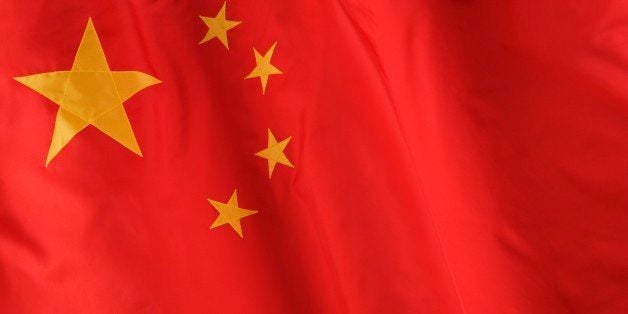
REPRINTED WITH PERMISSION FROM REAL CLEAR DEFENSE
Here are two important questions for the Republican and Democratic frontrunners at the next presidential debates:
Mr. Trump: Would you order aircraft carrier strike groups to the Taiwan Strait as Bill Clinton did in 1996 to defend Taiwan against Chinese aggression? And if so, what would you do as President if a Chinese anti-ship ballistic missile sunk an American aircraft carrier?
Ms. Clinton: Do you believe China is explicitly building weapons to sink American carriers? And if our carriers are so vulnerable to Chinese attack should we build more submarines instead of carriers?
These questions get to the very core of American strategy in Asia -- as well as the difficult politics of force restructuring. As Princeton's Aaron Friedberg has framed the problem:
The military challenge China poses to the United States requires the development of some military systems capabilities that have not, historically, been those the US military services prefer. The Navy likes aircraft carriers -- yet carriers look increasing vulnerable and we probably need more submarines.
So what's our next president to do to meet the challenge of China's growing "carrier killer" arsenal of missiles, mines, cruise missile-equipped catamarans, and ultra-quiet diesel-electric submarines? That's the subject of this article and companion video in Real Clear Defense's Crouching Tiger series.
To analysts like Professors Toshi Yoshihara and James Holmes of the US Naval War College, the obvious solution is to turn the asymmetric warfare tables right back on the Chinese by striking with more attack submarines at the very heart of China's weakness in the Asian theater. This weakness is the extreme vulnerability of China's merchant and military fleets to interdiction at the many chokepoints along the ally-controlled First Island Chain.
In Yoshihara's "more subs" scenario, attack submarines would serve as sentries and gatekeepers around choke points like the Soya Strait between the northern tip of Japan's home islands and the southern tip of the Kuril Islands, the Miyako Strait located about 190 miles from Okinawa along the arc of the Ryukyu Islands, and the 160-mile wide Luzon Strait between Taiwan and the Philippines - it played a key role first as an invasion route in Japan's conquest of the Philippines in 1941 and then as a critical chokepoint for America's naval and air blockade of Japan towards the culmination of World War II.
In the event of conflict - a Beijing move on Taiwan, a PLA assault on Japan's Senkaku Islands, perhaps an armed confrontation over China's fortress garrisons in the South China Sea - American attack subs could enforce an ensuing embargo by sinking any Chinese merchant or military vessels attempting to reach the open ocean. As Yoshihara describes this double-edged "more subs" sword:
We are the best submarine force in the world; and the Chinese have historically demonstrated a weakness in anti-submarine warfare. So at the same time that America is taking advantage of its inherent strengths, it is also exploiting one of China's inherent structural weaknesses.
Echoing this theme, Cambridge Professor and former White House advisor Stefan Halper insists that:
We have to take China's commitment to its area denial strategy very seriously; and taking it seriously means being aware of the limitations of using large naval platforms like aircraft carriers within range of their missiles and other ordinance that can take them down. It also means that we have to emphasize our submarine force because we need to be able to reinforce our friends and our allies, without putting these major assets in play.
On this point, James Holmes is unequivocal:
If I had my way, we would step up our construction of submarines. It's where we excelled during the Cold War and where we still excel today. The Chinese, for whatever reason, have not to date put a lot of effort into anti-submarine warfare, and therefore this is an advantage that will prove durable for the United States for quite some time to come.
However, Jim Fanell, former Director of Intelligence and Information Operations for the U.S. Pacific Fleet cautions:
While the PRC has not previously put a lot of effort into anti-submarine warfare, there is ample evidence that this capability "gap" has been clearly recognized by PLAN leaders and that they have embarked on strategy to rectify this situation. So, the fundamental question that demands serious consideration, above and beyond just U.S. Navy leadership, is how long will the U.S. maintain an advantage in the undersea domain and what can we do to keep extending it.
Of course, the other major downside of any complete shift to an undersea strategy is that America would lose the important symbolic value that aircraft carrier strike groups provide in advertising American force projection. Yoshihara, himself, is the first to acknowledge this downside. As he explains:
While American submarines are great anti-access weapons, they cannot fundamentally demonstrate American resolve through a show of force. Only aircraft carriers can do that job by showing up off the coast of a country or in the vicinity of a contested island to say: "America means business."
So what's a presidential candidate to say about this? We probably won't know unless a CNN or ABC or Fox or CBS or PBS moderator asks. But these are questions that deserve scrutiny by voters because their answers will largely determine the prospects for war or peace in the Asian theater.
The strategic truth here is that since the defeat of Imperial Japan in 1945, the United States has maintained both air and sea dominance in the Asia-Pacific. That dominance is now threatened by a rising and expansionist China and unless America strategically responds, its aircraft carriers which have kept the peace for more than six decades in Asia will crumble under the weight of China's anti-access, area denial strategy.
________________
Peter Navarro is a business professor at the University of California-Irvine and author of Crouching Tiger: What China's Militarism Means for the World (Prometheus Books) www.crouchingtiger.net
REPRINTED WITH PERMISSION FROM REAL CLEAR DEFENSE
